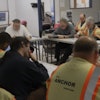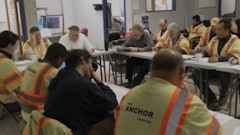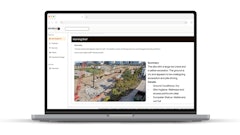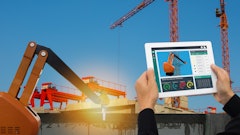
Does the term "back-end" mean anything to you?
In the retail world, back-end means how much you make off of a customer AFTER the initial sale.
U-haul's business strategy is a great example of how back-end works. If you've rented from U-haul within the past few years, you've seen their back-end in action.
Rent a U-haul truck for $19.99, drive it to where you're going to load up, roll up the back door, and you'll discover a dolly and blankets just waiting for you to set them free. And the second you do, you have agreed to pay somewhere between $15 to $25 for their use. Now that's playing the back-end game to perfection.
Years ago, U-haul discovered truck renters made their decisions based on the price of the truck and ignored the money spent on blankets, dollies, moving boxes, etc. Their profitability comes from the rental of blankets, dollies and sales of moving boxes, not from the rental of trucks.
Here's another example that may surprise you. It did us. Infomercial producers rarely make money on the product they spend 30 minutes pitching on your television. They make ALL of their money on the back-end that comes from up-sells during the original telephone order and through offers delivered via e-mail, mail, and telemarketing.
Are you beginning to wonder how back-end applies to your construction business? It's certainly not by tying it to a low margin first project.
Before fully exploring how to maximize the back-end, let's address the unfortunately common strategy of loss-leading.
Don't Get Used
If you've been in the industry longer than six months, someone has probably told you that they'd like to give you a shot but you're going to have to do the first job for cheap. First prove yourself, prove that you will live up to your promises of superior quality and service, then they'll treat you right. If you're as good as you say you are they'll make it up to you on the next job.
Right.
How often has that worked out for you? Probably not very often.
Here's what we've learned over decades in this industry. Clients who are tight the first time are always tight. They rarely let you charge significantly higher margins on future jobs. They usually respond to your higher price demand with "You did it for a lot less last time. You need to bring your price down."
Loss-leading is rarely a successful strategy in construction. The back-end just isn't there with customers who demand low price. Staying aware of the back-end - the true long term value of a good customer - makes customer selection much, much easier.
Calculating the Back-end
The back-end for a client is the total of all gross profits that will be generated from that client's work. Note that we're talking about GROSS PROFIT not revenue.
What things increase the back-end?
- Higher Margins
- More Projects
- Less Losses
Higher Margins can be a product of many things. The client may negotiate your price on each job. The client may prefer time and material contracts that include a fair fee and overhead charges. More projects speaks to volume of work.
Making a lot of money on one project is good. Making a lot of money on a dozen projects is better.
Less Loss means that you rarely lose money on the client's projects. That may be due to a client and design team who produce complete and error-free construction documents, make decisions quickly and decisively, and stay ahead of the project. Maybe the client gives you adequate time to plan and price his jobs. Maybe he takes care of you when unexpected problems arise with the site or with the design.
Each of these three behaviors reduces loss and increases the back-end.
The Golden Key: Back-end
Once you realize that profitable businesses are built on customers who provide substantial lifetime value, you will find it pretty easy to walk away from those that don't offer ongoing profitable work.
Only by staying true to the discipline of back-end will you give yourself financial freedom and restful nights.
Back-end is why we are fanatics about customer qualification. Having a stable of clients who pay you fairly for the services you provide is the only way we know to truly enjoy work. Thus, we implore you to develop highly tuned customer qualification skills as fast as you possibly can.
Qualify Your Prospects
Learn to how to quickly size up potential clients...determine which ones are going to use you and toss you aside and which ones are going to value your services and potentially enter into long term win-win relationships.
We know it's far easier to identify demons (price focused clients) than saints (service focused clients) however the skills and intuition can be developed quite quickly if you try.
Saints and Demons
Demons are ultra-price conscious, have unrealistic quality expectations, and are unwilling to accept blame for any error, indecision, or problem they create. The vast majority are almost proud of their ability to abuse contractors. Yes, demons are easy to spot.
Saints, on the other hand, can be difficult to read. They are often trained by lenders and designers to think and behave like demons. Until a saint runs across someone who explains the error of his way, he is going to focus on low price and is going to have unrealistic performance expectations...just like the demon.
However, if you listen closely and prod with the right questions, you'll notice that a saint's intuition is telling him there is a better way. The construction process doesn't have to be painful. Keeping the project in budget, at the needed quality level, and completed on time are far more important than is squeezing every last penny out of the project.
If you handle the sales and project delivery process properly, you'll know whether you might have a potential big-time back-end client on your hands. Now you may be on your third project with the client before you'll develop a feel for HOW BIG the back-end is going to be. You'll know whether there is any back-end to write home about by the end of the first project.
Return On Investment
Until you know the life-time value of your average customer via the back-end, you will struggle to make wise investments in sales, marketing and staffing.
Without knowing the life-time value, how can you possibly know which work to chase? How can you know how much to pay a business developer? How can you know whether hiring A-level superintendents and foremen will pay off?
For example, $60,000 could be too much to pay for a run-of-the-mill sales professional who struggles bringing in good customers while $200,000 could be just right for a sales professional who reels in saint after saint and keeps them coming back for more.
Take a page from the retail world, U-haul, and infomercial producers.
Think back-end. Focus on back-end.
Let the back-end guide your decisions about who to work for and what type of first project deal to offer them.
Additional Resources that Build on the Topics of this Article
Negotiate
Clients who pay you fairly
Project delivery process
Sales
Marketing
Staffing
A-level Employees




















